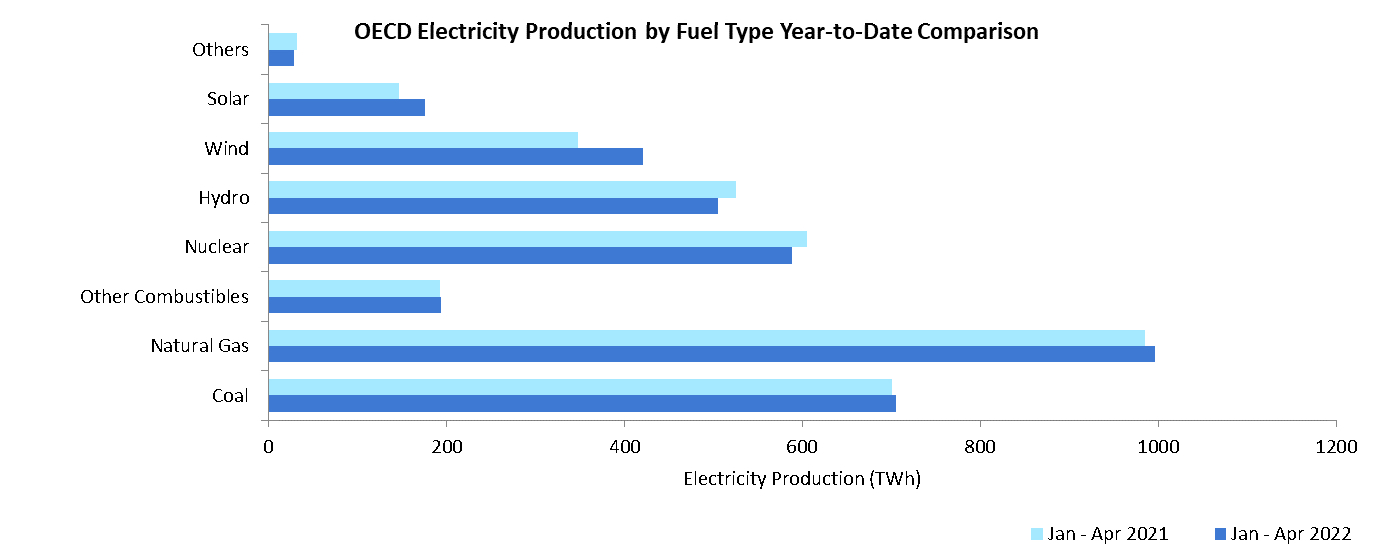 The latest International Energy Agency 'Monthly Electricity Statistics' report including April 2022 data shows that for total OECD membership net electricity production was 821.7 TWh in April, up by 1.3% on a year-on-year basis.
The latest International Energy Agency 'Monthly Electricity Statistics' report including April 2022 data shows that for total OECD membership net electricity production was 821.7 TWh in April, up by 1.3% on a year-on-year basis.
Renewable electricity production reached 309.2 TWh, up by 9.8% year-on-year. The increase was largely driven by higher wind and solar power production, +24.7% and +15.0% y-o-y respectively. Hydropower production, which continued to represent the highest share (+14.8%) of the electricity mix among renewable sources, increased slightly at 121.2 TWh (+1.2% y-o-y).
Fossil fuels provided 49.5% of the electricity production (406.3 TWh) in the OECD countries. Reliance on natural gas (217.9 TWh) and coal (145.2 TWh) was still high, corresponding to a 26.5% and 17.7% share in the electricity mix respectively. However, both were slightly lower, as was the nuclear contribution. Electricity production from natural gas decreased by 4.2% in April 2022 compared to April last year. Similarly, nuclear power output amounted to 129.2 TWh in April 2022, down by 7.0% y-o-y.
The standout figures came from the USA, where electricity production from wind jumped to 46.1 TWh in April 2022 (+28.7% y-o-y), with wind power reaching a record high share of 14.8% in the electricity mix. Solar power also gained significant momentum and increased by 23.6% at 17.8 TWh, corresponding to a 5.7% share in the electricity mix, an all-time high for the country. This reflects the general trend observed over the last years in the United States, where generation from renewables has been steadily increasing as a result of new capacity additions.
The IEA's Monthly Electricity Statistics features electricity production and trade data for all OECD Member Countries and electricity production data for a selection of other economies. The latest dataset may be downloaded from the IEA website.

